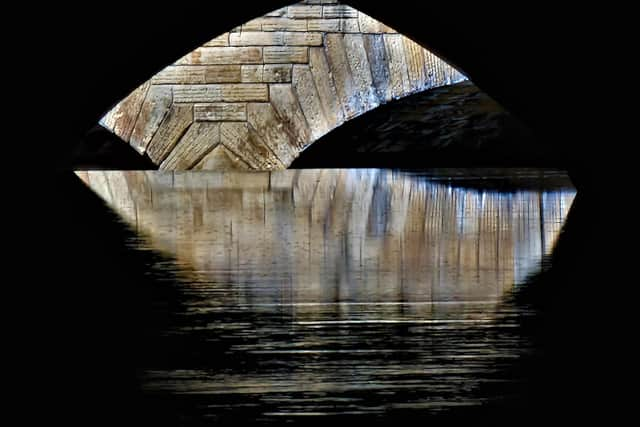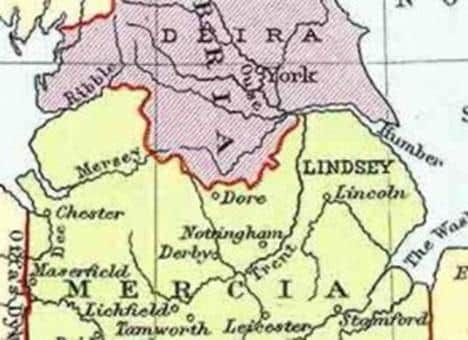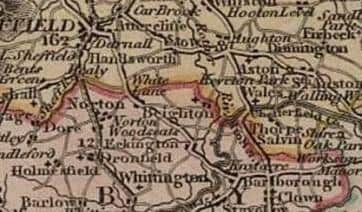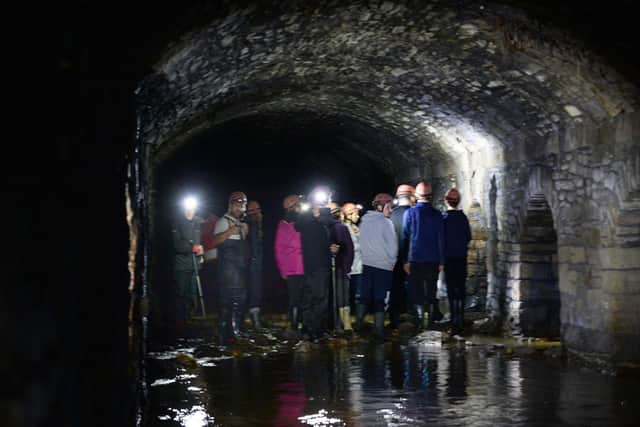Sheffield history: How the rivers are the true shapers of our city
and live on Freeview channel 276
I come from near Norton, but that's the south of Sheffield, about as south as you can get. Only when you look at a map from 1810, you see it refers to its actual position, in Derbyshire, not Sheffield. Its high location gives it views down into the neighbouring county of Yorkshire, so it was important, hence the ancient church.
Go back even further and we find its northern point in Mercia on the Northumbrian border. Hence Northe-Towne, Now called Norton. At this point I looked at the old borders and was amazed, the references to it are within the town and rivers’ names, even today.
Advertisement
Hide AdAdvertisement
Hide AdJust by Virgin Active on the River Sheaf you see a water outlet running into the river. It’s the Meers brook. When you look up the origin of the word it says: Brook meaning shallow water, or lake, and Meers, meaning “he who lived near a boundary”, deriving from the Olde English "(ge)moere" meaning "boundary". This is the boundary of Mercia and Northumbria, taking it up from the Sheaf.


Sheaf derived from the protection between the two tribal regions ( sceað 'boundary') i.e. like a sheaf that you put knives in or a natural gap.
If you want to see the border as it is today, watch the brilliant Patrick Dickenson YouTube video, just look up “Meersbrook “.
If you want to walk from one room into another you walk through a door. It’s the same as if you walk from one area to another you walk through a “Dore”. Dore literally means door, in this case the entrance into Northumbria from Mercia. It was at this Dore-way that the first overlord of all England, King Egbert, took his role as the first king of England. Anywhere else in England a great church would be built, but it's Sheffield, so we have a school, many centuries later.
Advertisement
Hide AdAdvertisement
Hide AdThe border carried on up to Gleadless and dropped down Shirebrook, again a brook between two shires, right the way up to the River Rother.


This importance was why Sheffield had a castle. You can go back even further and look at the likes of Wincobank Fort, many years before in the nineth century. These rivers were also the boundary of the ancient Romano-British Kingdom of Elmet, so our importance goes back many thousands of years.
How did Sheffield get its name then? It was from the river named Sheaf, (from Old English sceað 'boundary') and the Old English feld 'pasture'or 'open country'. It's open ground by the boundary.
On my favourite old maps, it’s still called Sheafeld and there is still an old bridge in Sheffield that spans between Mercia and Northumbria, along the brilliantly named Saxon Road at Heeley.
Advertisement
Hide AdAdvertisement
Hide AdSheffield is noted for its hills and its rivers. It’s an eye opener however how we thought we could take nature on and redirect the fast-flowing water courses that have long stood as our borders.


We often say that we should learn from history and the River Don or Dun (named as its waters were a dull greyish-brown colour), is a case in question. In the 17th century the river ran down from the north of Sheffield and gained the extra water from the Sheaf and Porter, before it then ran out towards Doncaster.
King Charles the first had his Royal hunt out at Hatfield Chase. He was a little upset that our rivers were flooding the land and ruining his hunt. He hired a Dutch engineer Cornelius Vermuyden to drain it in 1626.
The work on Hatfield Chase was only partially successful. The resultant straightening of the River Don and its new outlet into the River Aire caused flooding in Fishlake, Sykehouse and Snaith.
Advertisement
Hide AdAdvertisement
Hide AdAs a result of a lawsuit in 1633, Vermuyden dug the Dutch River. This provided a direct route from the Don to the River Ouse at Goole in an attempt to stop the flooding higher up the river. Funny one of the places sounds familiar, Fishlake, 400 years later and still flooding.


Higher up the river the Duke of Norfolk had a major problem with the Rivers Sheaf and Porter at Pond Street, as the constant flooding and raw sewage was the perfect breeding ground for disease. In 1832 the inevitable happened. Sheffield had the cholera epidemic with 402 dying, mainly from the Pond Street area. Something had to be done.
This by a fluke of history was the same period, 1833, that slavery was abolished and the great rise of the railways began. The aristocracy at the time had suddenly got masses of money in compensation for their slaves including indirectly, the Duke of Norfolk, which could be invested in our new transport system.
He could kill two birds with one stone, giving the Midland Railway the land called Pond Street on the proviso that the rivers would be channelled under the station in a system of culverts and tunnels. He would get a safe haven for the slave compensation his friends provided and his cesspit would have a roof on it. This system of tunnels was extended with the building of the Megatron. It had the height to carry the heavy trams across Exchange Street, thus creating what is listed as one of the greatest man-made underground structures in the world.
Advertisement
Hide AdAdvertisement
Hide AdWe got the new railway to London with the train’s wheels echoing in the ears still today of the lucky few who got to take the guided tours underneath the station to the Megatron last summer.
The only problem for visitors is that to get to the city from the station you have an uphill climb, some say Sheffielder’s have always had that, when we look at our history.
Now the twist: Sheffield’s new ability to get its water quickly out of our city allows it to flow faster towards Fishlake – we are then back to the mistakes of the 17th century again. We never learn.